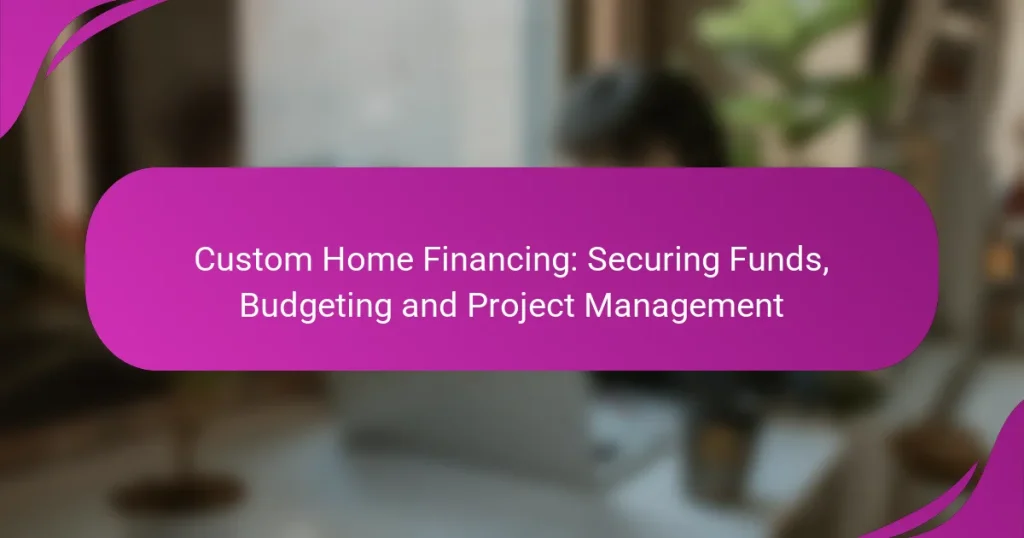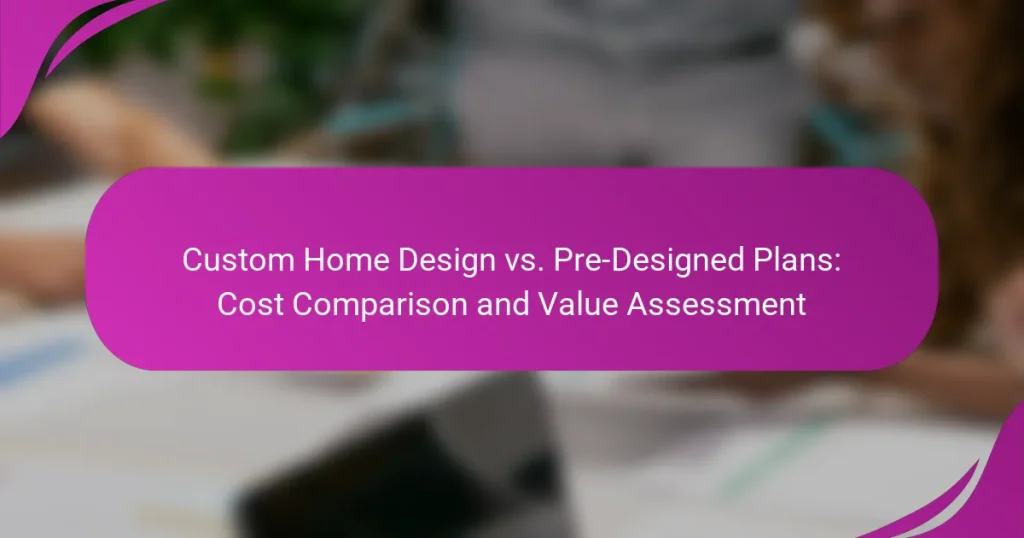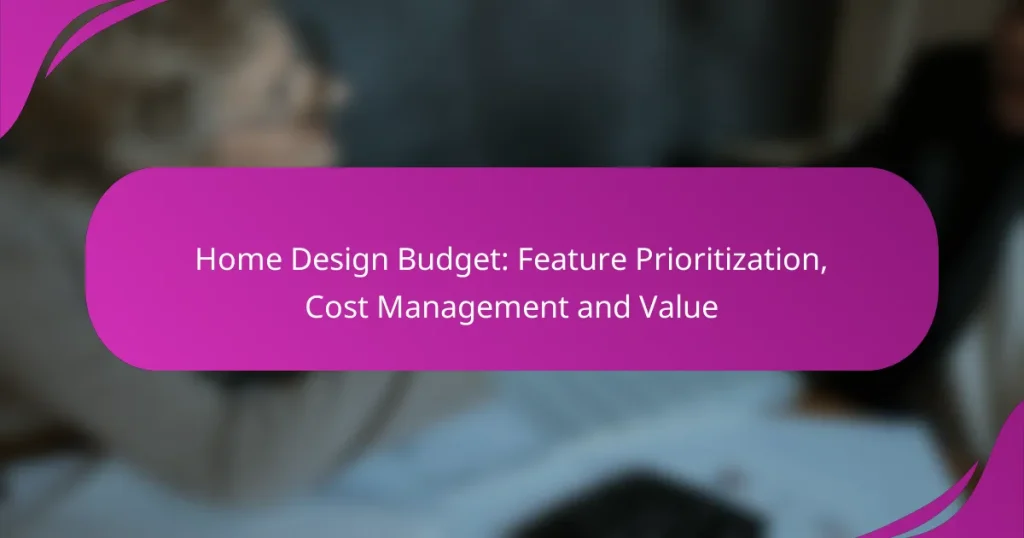Budgeting for home design is a crucial step in ensuring your project stays on track and within financial limits. By carefully planning your expenses and anticipating potential pitfalls, you can create a beautiful space without breaking the bank. Understanding common budgeting mistakes, such as underestimating costs and overlooking contingency funds, can help you avoid unnecessary stress and setbacks.
Custom Home Financing: Securing Funds, Budgeting and Project Management
Home Design Services: Cost Breakdown, Quality Factors and Savings
Custom Home Design: Budgeting, Quality Preservation and Cost-Saving Strategies
Custom Home Design vs. Pre-Designed Plans: Cost Comparison and Value Assessment
Home Design Budget: Feature Prioritization, Cost Management and Value
Custom Home Budget: Realistic Planning, Cost Breakdown and Prioritization
What are the best budgeting strategies for home design in Canada?
How to estimate costs for home design projects?
What are common budgeting mistakes in home design?
Common budgeting mistakes in home design include underestimating material costs, ignoring labor expenses, and neglecting to set aside contingency funds. These oversights can lead to significant financial strain and project delays.
Underestimating material costs
Many homeowners fail to accurately estimate the costs of materials needed for their design projects. Prices for materials can vary widely based on quality, availability, and market trends, so it’s crucial to research and obtain quotes from multiple suppliers.
To avoid this mistake, create a detailed list of all required materials and their estimated costs. Consider including a buffer of around 10-20% to account for price fluctuations or unexpected needs.
Ignoring labor expenses
Labor costs can often be overlooked when budgeting for home design. Homeowners may focus primarily on materials, but skilled labor can represent a significant portion of the total project cost, especially for complex tasks like electrical work or custom installations.
To ensure a comprehensive budget, obtain quotes from contractors and include both labor and any potential overtime costs. It’s wise to factor in 20-30% of the total budget for labor, depending on the project’s scope.
Neglecting contingency funds
Failing to set aside contingency funds can lead to financial difficulties during the home design process. Unexpected issues, such as structural problems or changes in project scope, can arise, necessitating additional funds.
A good rule of thumb is to allocate 10-15% of your total budget for contingencies. This safety net can help manage surprises without derailing your project or forcing you to compromise on your design vision.
How to prioritize spending in home design?
Prioritizing spending in home design involves focusing on essential structural elements and energy-efficient upgrades before allocating funds for aesthetic features. This approach ensures that your investment enhances the home’s functionality and sustainability while allowing for personalization later.
Focus on structural elements first
When budgeting for home design, start with structural elements such as the foundation, roofing, and walls. These components are crucial for the safety and longevity of your home, and neglecting them can lead to costly repairs later.
Consider allocating a significant portion of your budget—typically around 40-60%—to these essentials. For example, if your total budget is $100,000, aim to spend $40,000 to $60,000 on structural integrity.
Invest in energy-efficient upgrades
After addressing structural needs, invest in energy-efficient upgrades like insulation, windows, and HVAC systems. These improvements not only reduce utility bills but can also increase your home’s value and comfort.
Set aside about 20-30% of your budget for these upgrades. For instance, spending $20,000 to $30,000 on energy-efficient solutions can yield long-term savings and may qualify for local rebates or tax incentives.
Allocate funds for aesthetic features last
Aesthetic features, such as paint, flooring, and decorative elements, should be the final consideration in your budget. While they enhance the visual appeal of your home, they do not contribute to its structural integrity or energy efficiency.
Reserve around 10-20% of your budget for these enhancements. This allows you to personalize your space without compromising on essential investments. For example, if your total budget is $100,000, allocate $10,000 to $20,000 for aesthetics, ensuring that your home remains both functional and stylish.
What financing options are available for home design?
Several financing options can help you fund your home design projects, each with its own benefits and considerations. Common choices include home equity loans, personal loans, and government grants for renovations.
Home equity loans
Home equity loans allow homeowners to borrow against the equity they have built up in their property. Typically, these loans offer lower interest rates compared to personal loans because they are secured by the home. Borrowers can usually access a percentage of their home’s value, often ranging from 80% to 90% of the equity.
When considering a home equity loan, evaluate your ability to repay the loan, as failure to do so could result in losing your home. It’s also wise to shop around for the best rates and terms, as they can vary significantly between lenders.
Personal loans
Personal loans are unsecured loans that can be used for various purposes, including home design. Since they do not require collateral, interest rates may be higher than those for secured loans. Borrowers can typically access amounts ranging from a few thousand to tens of thousands of dollars.
Before applying for a personal loan, check your credit score, as it can significantly impact your interest rate and eligibility. Aim to compare offers from multiple lenders to find the most favorable terms and avoid high fees.
Government grants for renovations
Government grants for renovations are often available to homeowners looking to improve their properties, especially for energy efficiency or accessibility upgrades. These grants do not require repayment, making them an attractive option for funding home design projects.
Eligibility for these grants can vary based on income, location, and the type of renovation. Research local and federal programs, such as those offered by the U.S. Department of Housing and Urban Development (HUD) or similar agencies in your country, to find opportunities that may apply to your project.
How to create a home design budget template?
Creating a home design budget template involves outlining all potential costs associated with your project, from materials to labor. This structured approach helps you manage your finances effectively and ensures you stay within your budget throughout the design process.
Use Excel or Google Sheets
Using Excel or Google Sheets for your home design budget template allows for easy customization and real-time updates. Both tools offer functionalities like formulas and charts, which can help you track expenses and visualize your budget effectively.
Start by creating columns for categories such as materials, labor, permits, and furnishings. You can also include columns for estimated costs, actual costs, and the difference to monitor your spending closely.
To enhance your template, consider using conditional formatting to highlight overspending or to create summary tables that provide a quick overview of your total budget versus actual expenses. This will help you make informed decisions as your project progresses.






